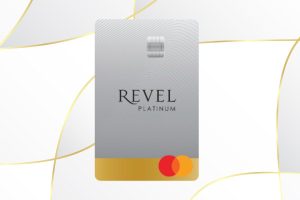When planning your finances for 2024, it’s key to find the best personal loan rates. You might need a loan to consolidate debt, buy something big, or cover unexpected costs. Getting competitive loan rates can help you save money over time.
The financial market is always changing, offering new chances for borrowers to get good deals on personal loans. Today, lenders like LightStream, SoFi, and Citi offer loans for different financial needs and credit levels. You can pick from various lenders with their own loan options. Knowing what affects loan rates and comparing lenders can improve your financial planning.
Key Takeaways
- LightStream offers personal loans with APR rates ranging from 7.49% to 25.49% for excellent credit scores starting from 695.
- Citi provides personal loans without fees at APR rates between 11.49% and 20.49%, targeting those with a minimum credit score of 720.
- SoFi lends from $5,000 to $100,000 for credit scores starting from 680, with APR rates between 8.99% and 29.49%.
- Upgrade and Best Egg cater to a wide range of credit scores, offering loans with APR rates as high as 35.99%.
- Factors influencing personal loan rates include your credit score, income, debt-to-income ratio, and more.
- Super prime borrowers (credit scores 781 to 850) can access rates around 6.39%, while deep subprime borrowers (credit scores 300 to 499) may face rates up to 17.35%.
Introduction to Personal Loan Rates
It’s important to understand personal loan rates if you’re thinking about getting a loan. Comparing these rates can greatly affect how much you’ll pay back. We’ll look at why comparing rates is important, what affects the interest, and the different types of loans available. This will help you make a smart choice for your finances.
Importance of Comparing Rates
When searching for a personal loan, it’s key to compare rates. Different lenders offer different rates, and a small difference can save or cost you a lot of money. With Americans owing $245 billion in personal loans as of 2024, making smart choices is crucial. By comparing, you can find the best deal, whether it’s for secured or unsecured loans.
What Affects Personal Loan Rates
Several factors influence the rates you get from lenders. Key ones include:
- Credit Score: A higher score means lower rates, while a lower score can lead to higher rates. Rates range from 18.66% for top scores to 171.69% for scores under 560.
- Loan Term: Shorter terms usually have lower rates than longer ones.
- Loan Amount: Bigger loans might have better rates but increase your debt.
- Lender Policies: Each lender has its own criteria and offers. For example, LightStream offers rates from 6.99% to 25.49%, while Upstart ranges from 7.80% to 35.99%.
Knowing these factors helps you negotiate better and find the right loan.
Types of Personal Loans
Choosing the right loan depends on your financial situation and needs. Here’s a look at the main types:
- Secured Loans: These need collateral, like a car or home. They have lower rates because they’re less risky for lenders.
- Unsecured Personal Loans: These don’t need collateral and rely on your credit score. They usually have higher rates than secured loans.
- Debt Consolidation Loans: Designed to combine several high-interest debts into one easy payment. 55.1% of borrowers use these loans to pay off debt or refinance credit cards.
Understanding these options lets you pick the loan that fits your goals. Whether you want to consolidate debt, buy something big, or cover other expenses, there’s a loan for you.
| Lender | APR Range | Key Features |
|---|---|---|
| LightStream | 6.99% to 25.49% | No fees, good credit required |
| SoFi | 8.99% to 29.49% | Pays creditors directly, high limits |
| PenFed Credit Union | 8.99% to 17.99% | No origination fees |
| Discover | 7.99% to 24.99% | U.S.-based customer service |
| Upstart | 7.80% to 35.99% | Loans for low- or no-credit borrowers |
Choosing the right lender and loan type is key. By comparing rates, considering different factors, and understanding the types of loans available, you can make a smart choice for your financial situation.
Top Lenders for Personal Loan Rates in 2024

As we enter 2024, finding the best personal loan lenders is key to getting great rates. We’ll look at three top lenders: LightStream, SoFi, and Citi. Each offers competitive APR and low fees, blending traditional and online lending. They meet different financial needs and preferences, making them great choices for borrowers.
LightStream
LightStream, part of Truist Bank, is known for its low fees and competitive APR, from 6.99% to 25.99%. It’s perfect for those with good credit, offering loans from $5,000 to $100,000. You can choose repayment terms from 2 to 12 years, with no origination or late fees. This makes it ideal for big expenses like home improvements or paying off debt.
| Lender | Loan Amount | APR Range | Repayment Terms |
|---|---|---|---|
| LightStream | $5,000 to $100,000 | 6.99% to 25.99% | 2 to 12 years |
SoFi
SoFi is a top online lender known for its easy customer experience. It offers loans from $5,000 to $100,000 with rates from 8.99% to 29.49%. It’s great for those with less-than-perfect credit, offering benefits like unemployment protection. SoFi has no fees for origination, applications, or early repayment, making it borrower-friendly. They also offer insurance and investment services.
| Lender | Loan Amount | APR Range | Repayment Terms |
|---|---|---|---|
| SoFi | $5,000 to $100,000 | 8.99% to 29.49% | 2 to 7 years |
Citi
Citi is a big name in traditional bank loans, offering personal loans with clear fees. With no origination fees, you can borrow from $2,000 to $30,000. Their APR ranges from 11.49% to 20.49%, suitable for various credit levels. You can repay loans in 1 to 5 years, giving you flexibility. Citi’s wide banking network and trustworthiness make it a solid choice.
| Lender | Loan Amount | APR Range | Repayment Terms |
|---|---|---|---|
| Citi | $2,000 to $30,000 | 11.49% to 20.49% | 1 to 5 years |
Personal Loan Rates for Different Credit Scores
Your credit score greatly affects the rates and terms you get from lenders. Knowing how your score impacts your loan options can help you get better deals.
Excellent Credit (720+)
People with credit scores of 720 or higher usually get the best rates. These rates can be between 10.73% and 12.50%. They are rewarded for being financially responsible and managing their debts well.
Good Credit (670-719)
Good credit scores, between 670 and 719, also lead to good loan terms. Rates for this group are about 13.50% to 15.50%. Keeping your credit strong and managing your debts well can help you get even better rates.
Fair Credit (580-669)
If your credit score is between 580 and 669, you’ll likely pay higher rates. Rates can be from 17.80% to 19.90%. Improving your credit score through better debt management can lower your costs.
Bad Credit (Below 580)
A bad credit score, below 580, means you’ll pay the highest rates, from 28.50% to 32.00%. It’s harder to qualify for loans with bad credit. But, improving your credit score over time can make your loans more affordable and improve your financial health.
Best Personal Loan Rates for Excellent Credit
If you have excellent credit, getting the lowest APR personal loans is easier. Lenders offer prime interest rates, saving you money over the loan’s life. With a FICO score of 720 or higher, here’s a guide to recommended lenders, their rates, and what you need to qualify.
Recommended Lenders
For those with excellent credit, several lenders stand out for their top-tier benefits:
- LightStream: Offers rates from 5.99% to 23.99% with AutoPay for scores of 800 or higher. Loans up to $100,000 are available.
- Wells Fargo: Rates range from 6.99% to 23.24% for loans from $3,000 to $100,000.
- SoFi: Rates are between 7.99% to 23.43% for loans from $5,000 to $100,000.
- American Express: The lowest rate is 5.91%, making it a great option for high credit scores.
Lowest Available APRs
Excellent credit means you can get the lowest APR personal loans. Borrowers enjoy prime interest rates:
| Lender | Minimum APR | Maximum APR | Loan Amount Ranges |
|---|---|---|---|
| LightStream | 5.99% | 23.99% | Up to $100,000 |
| Wells Fargo | 6.99% | 23.24% | $3,000 to $100,000 |
| SoFi | 7.99% | 23.43% | $5,000 to $100,000 |
| American Express | 5.91% | Varies | Varies |
Eligibility Criteria
To get these great rates, you must meet certain criteria:
- Credit Score: A score of 720 or higher is usually needed. LightStream looks for a score of 700 or higher. SoFi, Wells Fargo, and American Express also focus on high scores.
- Income: You’ll need a minimum annual income of at least $40,000 with Discover.
- Other Financial Metrics: Your debt-to-income ratio, loan terms, and job status are important for approval.
Knowing what lenders look for helps you prepare for the application. With this info, you can confidently apply to lenders and get the best loan terms.
How to Compare Personal Loan Rates 2024

Understanding personal loan rates is key to smart financial choices. To compare loans well, you need to know about the annual percentage rate (APR), loan fees, and how different terms affect costs. This guide will break down these elements to help you understand the real cost of borrowing.
APR vs. Interest Rate
The APR and interest rate are different parts of a loan deal. The interest rate is the yearly charge on the loan amount. The APR adds this to any extra fees and costs, showing the real borrowing cost. For example, LightStream offers loans with APRs from 7.49% to 25.99%, showing the varied costs depending on the loan details.
Loan Fees and Other Costs
When looking at personal loans, don’t forget to check the extra fees. These can include origination fees, late fees, and prepayment penalties. Origination fees can be 1% to 5% of the loan, greatly affecting your total cost. For instance, Payoff’s personal loans have APRs from 11.72% to 17.99%, and knowing these fees helps you understand the full borrowing cost.
Repayment Terms and Flexibility
Choosing the right loan term is crucial for your total cost and monthly payments. Loan terms vary from 12 to 84 months, with options like SoFi offering terms from two to seven years. Flexible terms can make payments easier, letting you choose a term that fits your budget.
| Lender | Loan Amount Ranges | APR Range | Minimum Credit Score |
|---|---|---|---|
| LightStream | $5,000 – $100,000 | 7.49% – 25.99% | 660 |
| Payoff | $5,000 – $40,000 | 11.72% – 17.99% | 640 |
| SoFi | $5,000 – $100,000 | Varies | 680 |
| Prosper | $2,000 – $50,000 | Varies | 640 |
When choosing a loan, consider APR, fees, and terms carefully. A thorough comparison will help you find a loan with clear costs. This ensures you pick a loan that meets your financial goals.
Secured vs. Unsecured Personal Loan Rates
When looking at personal loan options, you might see terms like asset-backed loans and collateral loans. These are secured loans, backed by things like cars, savings, or property. Unsecured loans, on the other hand, don’t need any collateral and rely on your credit and income.
Secured loans usually have lower interest rates because they’re less risky for lenders. For example, interest rates for these loans can go from 8.49% to 35.99%. They also have fees, like a $25 to $500 flat fee or a 1% to 10% fee of the loan amount. You can borrow between $1,500 and $20,000, and the loan terms are 24, 36, 48, or 60 months.
Unsecured loans have higher interest rates because they’re riskier for lenders. They look at your credit history, income, and other factors to set the rates. If you have good credit and a low debt-to-income ratio, you might get better rates.
It’s important for borrowers to know the difference between these loans to make a smart choice. Here’s a closer look at how they compare:
| Loan Type | Interest Rates | Fees | Loan Amounts | Terms | Borrowing Criteria |
|---|---|---|---|---|---|
| Secured Loans | 8.49% to 35.99% | $25 to $500 or 1% to 10% | $1,500 to $20,000 | 24, 36, 48, and 60 months | Backed by assets |
| Unsecured Loans | Variable based on credit | Vary by provider | Typically higher ranges | Flexible | Based on creditworthiness |
Secured loans can help improve your credit score if you pay on time. This gives you two benefits: getting the money and possibly boosting your credit. But, remember, timely payments are key to avoid hurting your credit score.
Choosing between asset-backed loans and unsecured borrowing depends on your financial situation and how much risk you can handle. By considering these factors, you can pick the best option for your long-term financial health.
Current Trends in Personal Loan Rates for 2024
Personal loan rates in 2024 are changing due to market interest rates, financial forecasts, and competitive lending. Right now, a three-year personal loan has a rate of 15.58%, down from last month but up from last year. For a five-year loan, the rate is 19.69%, higher than last year and last month.
On average, people are borrowing more money, with balances reaching $11,829. New borrowers typically start with about $6,700. This shows more people are turning to personal loans for financial help. The total debt in the U.S. for these loans hit $245 billion in the first quarter of 2024.
Credit scores are key in getting lower loan rates. A good FICO score (670+) can lead to lower rates. Currently, only 3.75% of loans are late, down from the last quarter. A hard credit check can lower your score by about five points, affecting your credit report for two years.
Credit unions offer lower rates than banks, helping those who join. Even with high rates on 24-month loans from banks, many turn to other lenders. Finance and fintech companies now handle a big part of these loans, with fintech leading at 28.40% and banks at 22.20% in April 2024. Fintech also gives out the biggest loans, averaging $15,799, compared to banks’ $10,941.
Most people take out personal loans to manage debt. 35% use them for debt consolidation, and 16% for credit card refinancing. Knowing about these trends can help you make better financial choices, matching your actions with the current economic situation.
Tips for Securing the Best Personal Loan Rates for 2024
To get the best personal loan rates in 2024, you need a solid plan. Improving your credit score is key to getting good terms. Here are some tips to help you get the best loan rates.
Improving Your Credit Score
Start by boosting your credit score to get better loan terms. A higher score means better loan offers. Pay down your debts and pay bills on time to improve your score. Aim for a score of 720 or higher to get the best rates.
Prequalifying for a loan with a soft credit check can also help. It shows you’re eligible without hurting your score. As of July 8, 2024, a score of 720 or higher gets you the best rates on three-year personal loans.
Negotiating with Lenders
Good negotiations can lead to better loan terms. Lenders look at your debt-to-income ratio. A ratio below 36% is considered good.
Use your financial stability to your advantage in negotiations. Keep an eye on trends like the falling federal funds rate. It’s expected to drop to 4.6% by the end of 2024, which could make lenders more willing to negotiate.
Using a Co-signer
Having a co-signer can also help you get better loan rates. A co-signer with a strong credit score can lower your interest rates. This is especially helpful if your score is not high enough for the best rates.
Steps like improving your credit, negotiating with lenders, and using a co-signer can lead to better loan rates. By following these strategies, you can make the most of the personal loan market in 2024.
Comparing Personal Loan Rates 2024: Banks vs. Online Lenders

Choosing between traditional and online loans depends on many factors. These include interest rates, how easy they are to get, customer service, and how fast you get your money. This breakdown looks at traditional banks and online lenders to help you pick the best loan.
Bank Loans
Bank loans need a good credit score for the best rates and terms. For three-year loans, the average rate is about 15.38%. Five-year loans average 18.93%. Banks check your credit hard, which might lower your score but can improve it with regular payments.
Banks offer face-to-face customer service for personalized advice. But, since they make money, their rates might be higher than those from credit unions.
Online Lenders
Online lenders have changed the game with quick approvals and easy requirements. They offer loans without needing collateral but at higher rates. Rates from top online lenders like SoFi, LightStream, and Upstart vary from 5.40% to 35.99%, based on your credit score and other factors.
Online lenders can give you money fast, sometimes the same day. Their online process is easy to use, making it a good choice for those in a hurry. But, watch out for fees that can add up to 8% of your loan amount.
Pros and Cons of Each Option
| Aspect | Banks | Online Lenders |
|---|---|---|
| Interest Rates | Average 15.38% – 18.93% | Ranges from 5.40% to 35.99% |
| Approval Speed | Several Days to Weeks | Same Day to Few Business Days |
| Customer Service | In-Person, Personalized | Digital, Varies |
| Collateral Requirement | Required for Secured Loans | Generally Not Required |
| Flexibility | Less Flexible Qualification | More Flexible Qualification |
| Origination Fees | Varies, Potentially Lower | 1% – 8% |
Both traditional banks and online lenders have their pros and cons. Your choice should match your financial needs, how fast you need the money, and what kind of customer service you like. By looking at the good and bad points, you can make a choice that fits you best.
Conclusion
Understanding loan rate decisions is key when you’re looking for a personal loan. This article has shown how important it is to compare rates. Doing so helps you find the best deal and fit it with your financial plan.
Using the info on top lenders and current trends, you can make smarter borrowing choices. This makes you more powerful as a borrower.
For personal loans in 2024, it’s crucial to empower yourself financially. You can boost your credit score or use a co-signer to get better rates. The loan market changes often, with different APRs, terms, and amounts available.
When making loan decisions, stay active and informed. Talk to various lenders, understand the costs of different terms, and keep up with trends. This way, you’ll reach your financial goals and make the most of what 2024 offers. With loans up to $100,000 and terms up to 84 months, and rates as low as 5.99% APR, you can find a solution that fits your needs.










